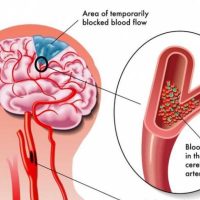
In May a “superbug” that is resistant to colistin — the antibiotic of absolute last resort — was found in a U.S. patient’s urinary tract infection.
Colistin is used to treat people infected with a type of bacteria called CRE, or carbapenem-resistant enterobacteriaceae. E. coli is one type of enterobacteria, though not all E. coli strains have acquired resistance to carbapenem.
Bacteria that are resistant to multiple antibiotics are considered very bad news. While doctors were able to treat the woman’s infection with other antibiotics, the discovery of a colistin-resistant bug in the United States has experts on high alert, the second alarm since colistin-resistant E. coli were discovered in China in November 2015.
In addition to the United States, the superbug has been found in Europe and will not only spread farther but could also give rise to completely new strains of superbugs, experts say. The genetic element that makes the bacteria resistant to colistin is found on a small, circular piece of DNA called a plasmid, which are unique because they can be transferred easily from one species of bacteria to another. Because of this, it’s clear that this genetic element has the potential to spread to other strains of bacteria, although that hasn’t happened yet.
Indonesia Joins the Race
Drug companies should agree to “pay or play” in the urgent race to develop new antibiotics to tackle a global threat of antimicrobial resistance (AMR). Even Indonesia is in the game: A tree that abounds in West Sumatra, which is the source of a traditional herb to heal burns and diarrhea, may provide the first antibiotic to come from the country.
A team of scientists from the Indonesian Institute of Science (LIPI), led by senior researcher Andria Agusta, extracted entophytic fungi from gambier trees in the West Sumatran village of Payakumbuh, to study their molecular structure and found two chemical compounds, bislunatin and episitoskirin, that fit the biological classification of antibiotics.
Both chemical compounds were also found to effectively destroy pathogen bacteria, which are resistant to current generations of antibiotics. After three years, Agusta’s team is in their final phase and is likely to proceed with the clinical test next year.
The discovery may mark an important step forward as new antibiotics are needed in view of widespread antimicrobial resistance, which especially affects patients in surgery who are susceptible to infection.
8 Scary Facts About Antibiotic Resistance
- In the United States alone, two million people each year contract serious antibiotic-resistant infections, and 23,000 die from them.
- We’ve been warned about antibiotic resistance since at least 1945. We just haven’t been listening.
- Antibiotic-resistant strains of bacteria are on the rise.
- There has been a steady decline in FDA approvals for new antibiotics.
- As many as half of all antibiotic prescriptions either aren’t needed or are “not optimally effective.”
- And it’s not just human medical misuse—a large volume of antibiotics is inappropriately used in livestock.
- Before antibiotics, death rates were much higher from very common occurrences like skin infections, pneumonia, and giving birth.
- The next major global pandemic may involve an antibiotic-resistant superbug.
Source: Drugs, Discover, Development mag; Mother Jones; SBS











